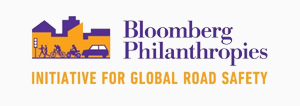





Multimodal Transport and Land Use Planning
Implement policies that promote compact urban design. Implement policies that lower speeds, and prioritize the needs of pedestrians, cyclists, and public transport users. Promote transit-oriented development to concentrate urban and commercial developments around mass transit nodes. Strategically locate – where feasible – public, subsidized, and workforce housing to provide convenient access to high-capacity transit services. Discourage the use of private vehicles in high density urban areas by putting restrictions on motor vehicle users, vehicles, and road infrastructure, and provide alternatives that are accessible, safe, and easy to use, such as walking, cycling, buses and trams. Provide intermodal connectivity between transit and bike share schemes at major transit stops and create transport connections for bicycle and pedestrian travel that reduce total travel time. Construct (or reconstruct existing) transport networks to ensure that non-motorized modes of travel are as safe as motorized ones, and most importantly serve the travel needs of all ages and abilities. Promote positive marketing and use of incentives such as employer cost-sharing of public transport subscriptions.








